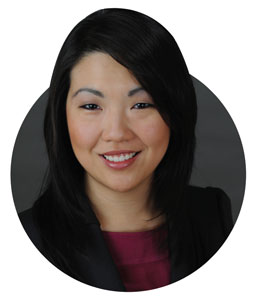Cornea
December 2021
by Clara Chan, MD
Cornea Editor

As 2021 draws to a close, I reflect on the challenges that we have overcome: COVID-19 lockdowns, home schooling, managing eyes with more advanced disease, lengthy waitlists due to OR backlogs, patients hesitant to see their doctors in person, etc. In surgery, reflection after complications or unexpected outcomes is important. The resident operating with me last week experienced his first posterior capsule rupture. He was visibly shaken as we concluded the case. We managed to clean up all the prolapsed vitreous, implant a sulcus posterior chamber intraocular lens, and keep the corneal endothelium reasonably protected such that at the 1-week postop follow-up appointment, there was no corneal edema. As surgeons, when we realize in the middle of a case that we have encountered a complication, staying calm is always easier said than done. What helps is to have a game plan for possible complications that can occur in advance. It is much easier to switch gears to go to Plan B or Plan C if those exist already. It is much more difficult to come up with Plan B or Plan C on the fly.
As surgeons, when we realize in the middle of a case that we have encountered a complication, staying calm is always easier said than done. What helps is to have a game plan for possible complications that can occur in advance.
In endothelial keratoplasty surgery, whether it’s DSAEK or DMEK, there is always the concern of graft detachment. Discussing this possible event and other possible complications with the patient prior to surgery is important to help them maintain trust in their surgeon. Establishing a set protocol for when and how to rebubble instills the surgeon with confidence, which the patient will also sense.
When assessing a patient, if you have a methodical way to examine them at the slit lamp, you will always remember to lift the upper eyelid to look for signs of EBMD, Salzmann’s nodules, limbal stem cell deficiency, or superior limbic keratitis. While you are lifting the upper eyelid, you are also testing for the presence of floppy lids, lid laxity, and meibomian gland dysfunction. Now I have to remind myself to tell a patient to quickly pull their mask down so I can assess for signs of rosacea. All of these clinical features, if missed, can impact your cataract surgery outcomes or your patient’s level of satisfaction.
I frequently share with my fellows and residents that it is important to stay humble as a surgeon. Even when we do our best for our patients and have excellent outcomes, there will always be unpredictable issues that can arise. A condition called neuropathic pain is one such unpredictable outcome after surgery. These patients are a massive challenge, and as ophthalmologists, we are limited with what we can do to help. This issue of EyeWorld has an article on this topic that I hope our readers will find enlightening.
Performing surgery is a learning process as new techniques are developed and advances are constantly made. When I completed my cornea fellowship, DMEK did not exist, nor did Descemet’s stripping only (DSO). If someone told me back then that you could rip a 4-mm zone of Descemet’s membrane in the middle of the visual axis and the overlying cornea edema would spontaneously clear, I would never have believed them.
I wish you and your loved ones a joyful and prosperous 2022.



